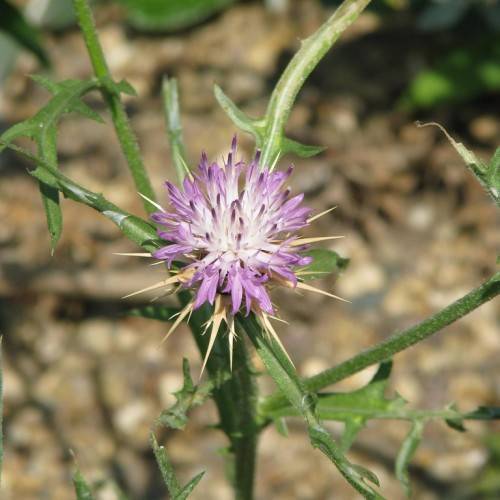
Big Head Purple Star Thistle
Centaurea calcitrapa
Also Known As - Red Star ThistleWatering:
Average
Hardiness Zone:
Flowers:
Flowers
Sun:
full sun
Soil:
Sand, Loam
Fruits:
Fruits Ready In Fall
Edible:
Yes
Leaf:
Yes
Growth Rate:
Low
Drought Tolerant:
Yes
Salt Tolerant:
Yes
Care Level:
Medium
watering
The Dwarf Hackberry should be watered thoroughly as soon as the top 2 inches of soil in the pot become dry to the touch. The plant should be thoroughly saturated with water and then allowed to drain. Then wait until the soil has dried out about 2 inches down from the top before watering again. Generally, watering should occur once a week in the summer and about every 3 weeks in the winter.
sunlight
Dwarf Hackberry (Celtis tenuifolia) performs best in full sun. It is a deciduous shrub that should receive at least 6-8 hours of full sunlight a day for optimal growth and flowering. The leaves of the shrub are best able to absorb the sunlight when the sun is at its peak, so the best time of day to provide sunlight for this plant is from mid-morning to mid-afternoon.
pruning
Pruning of Dwarf Hackberry (Celtis tenuifolia) should be done in late winter or early spring. Pruning should only take place if the plant's growth is out of control and it needs to be reduced in size. For the most part, Dwarf Hackberry requires only minimal pruning. Pruning of the tips and branches is encouraged for shaping the desired look and to remove any dead wood. Heavy pruning of more than 1-third of the plant should be avoided, however, as it can cause shock to the plant.
